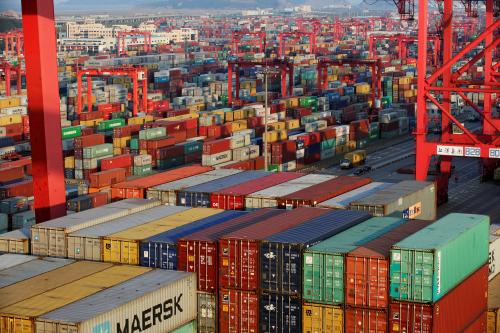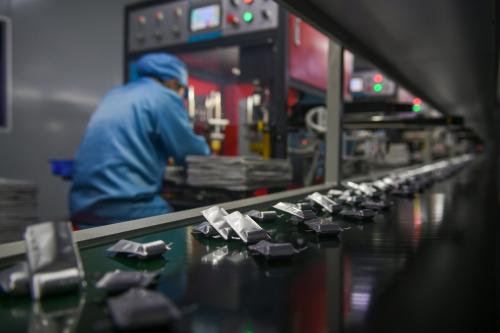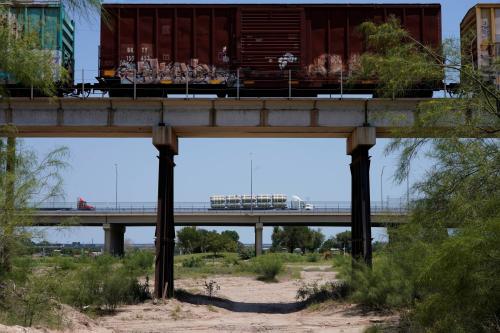Throughout 2018, the United States has introduced new tariffs on products imported from several trading partners, citing national security concerns, unfair trade practices, or serious injury to domestic industries. Leaving aside the justification for these tariffs, preliminary analysis shows that the newly introduced tariffs are in line with “Column 2” (non-Most Favored Nation) tariff rates currently applied on U.S. imports from Cuba and North Korea, i.e., countries that do not benefit from “normal trade relations (NTR).” For the most part, Column 2 tariffs are the original Smoot-Hawley tariffs that were applied to all U.S. imports under the Tariff Act of 1930.
The United States harmonized tariff schedule (HTS) contains two columns defining two different sets of tariff rates. The first column represents Most Favored Nation (MFN) duties, to be applied non-discriminatorily on U.S. imports from trading partners that benefit from so-called normal trade relations (NTR), usually also members of the of the World Trade Organization (WTO). HTS also contains a second set of much higher, non-MFN duties, often referred to as Column 2. These are largely the same as the Smoot-Hawley tariffs of the 1930s. As a result of various rounds of negotiations and trade liberalization under the umbrella of the General Agreement on Tariffs and Trade (GATT) and the WTO, U.S. tariffs were significantly reduced, but Column 2 rates were retained.
At the present, there are only two countries—Cuba and North Korea—that are denied NTR status. At different points in time, however, various countries and territories were either suspended, conditioned or revoked NTR status and their exports to the United States were subject to Column 2 tariffs. For instance, under the Trade Agreements Extension Act of 1951, the United States suspended the use of MFN tariffs on imports from countries of the Soviet Union and others under communist control, with the exception of Yugoslavia. The Jackson–Vanik amendment to the Trade Act of 1974 withheld NTR status from communist, non-market economies that restricted the freedom of emigration and other human rights.
In 2018, Column 2 tariffs average at about 32 percent, compared to MFN duties at only 2.3 percent (Figure 1). Under the MFN column, close to half of all products are traded freely and an additional 20 percent are subject to tariffs between 5-10 percent (Figure 2.A). Tariff peaks with MFN duties higher than 60 percent affect only a small share of HTS and apply mostly to U.S. imports of certain tobacco and peanut products. In stark contrast, tariff peaks affect more than 40 percent of all products in Column 2 and there are important clusters of imports subject to 25 and 35 percent tariffs (Figure 2.B).
Figure 2: The frequency distribution of U.S. tariffs

China, the biggest in the group of non-market economies, was first granted non-discriminatory MFN status in 1980. This was, however, subject to annual renewal and even in the absence of actual changes in U.S. tariffs, introduced a great deal of uncertainty and political controversy in US-China trade relations. Every year between 1990 and 2001, the U.S. Congress introduced but failed to pass legislation to revoke China’s NTR status. Finally, in 2000, China was granted permanent normal trade relations (PNTR) status, also facilitated by its accession to the WTO in 2001. Close to two decades after granting China PNTR status, there’s still a lot of controversy that surrounds China’s non-market economy status as well as the impact of China’s WTO accession and PNTR status on the decline in U.S manufacturing.
In the context of escalating U.S. protectionist measures, it is hard to ignore similarities between the recently imposed U.S. tariffs, the incipient trade war with China, and the general protectionist nature of Smoot-Hawley-inspired Column 2 tariffs (Figure 1). For instance, the trade-weighted average of Column 2 tariffs on steel products is about 23.7 percent, very much in line with the newly introduced steel tariffs of 25 percent. Similarly, the 30 percent tariff on solar panels is consistent with the 35 percent Column 2 duty. A potential 25 percent tariff on autos and auto-parts would be commensurate with Column 2 average tariffs at 32.6 percent and much higher than the current average MFN rate of 4.1 percent. Withdrawing PNTR status from China or any other member of the WTO would violate U.S. commitments. Nevertheless, despite recent progress in bilateral negotiations that avert the escalation of trade tensions between the United States and the EU, there seems to be a shift to the use of Smoot-Hawley-inspired protectionist measures in the United States. Furthermore, a potential U.S. withdrawal from the multilateral trading system and the WTO, if accompanied by a shift to Column 2 type protectionism, would have devastating consequences.
The Brookings Institution is committed to quality, independence, and impact.
We are supported by a diverse array of funders. In line with our values and policies, each Brookings publication represents the sole views of its author(s).






Commentary
Back to the 1930s: Do US tariffs signal a shift to Smoot-Hawley-type protectionism?
July 26, 2018